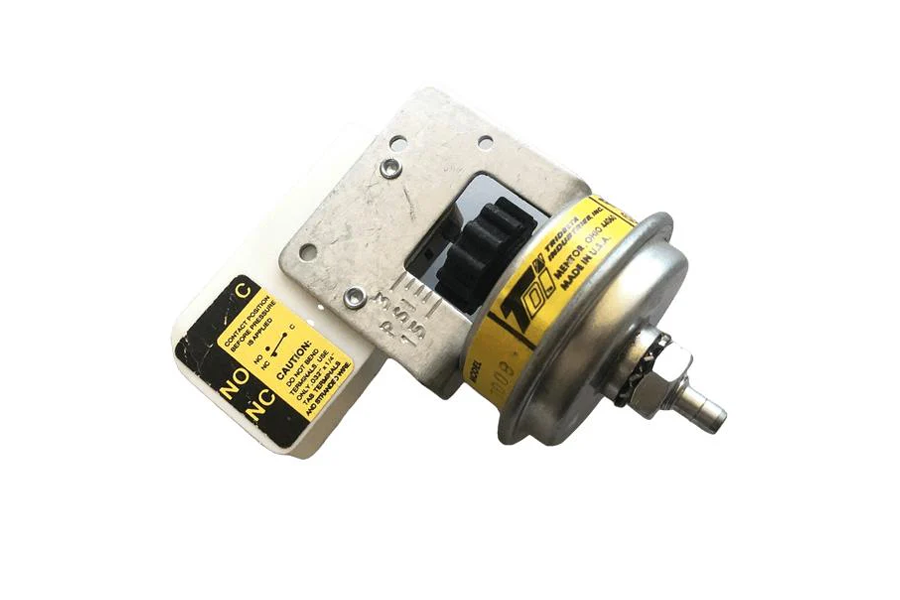
If you’ve ever wondered what keeps your home’s furnace from running when there’s a blockage or why industrial machines don’t overheat or overpressurize, you’re probably looking at the quiet work of a pressure switch. While this small device is often tucked away behind panels or inside machines, its role is anything but minor. From homes to heavy industry, pressure switches serve as guardians of safety and performance.
What Is a Pressure Switch?
At its most basic level, a pressure switch is a device that monitors fluid or gas pressure within a system. When the pressure reaches a certain setpoint, the switch opens or closes an electrical circuit. This action can either start or stop a connected piece of equipment.
Think of it like a traffic signal for pressure. When the system is within normal limits, the switch allows operation to continue. When pressure climbs too high or drops too low, the switch reacts by cutting off power or activating a safety mechanism. It’s simple, yet incredibly effective.
Why Pressure Switches Matter
Many modern systems rely on a delicate balance of pressure. In HVAC systems, for example, proper airflow and gas pressure are critical for safe combustion. In this context, a pressure switch ensures that conditions are right before the system even attempts to ignite. If something is off—like a blocked vent or a cracked hose—the switch steps in and prevents ignition, reducing the risk of fire or carbon monoxide exposure.
The same principle applies in manufacturing. A hydraulic press, for instance, may require a specific range of fluid pressure to operate efficiently and safely. If pressure deviates from the norm, the switch prevents damage to the equipment or harm to the operator.
Without pressure switches, these systems would either have to be closely monitored manually or run the risk of failing catastrophically. These small devices act as both safety net and efficiency booster.
Inside the Mechanism
While pressure switches come in many forms, their core components are fairly consistent. Most include:
- A pressure-sensing element, such as a diaphragm or piston
- A spring that defines the pressure setpoint
- An electrical contact that opens or closes when triggered
When the pressure reaches a preset level, it deflects the diaphragm or piston. This mechanical action moves the electrical contact, changing the state of the circuit. Some switches are adjustable, allowing technicians to set custom thresholds for specific applications.
Advanced models, particularly those used in digital systems, include sensors and microcontrollers. These allow for more precise measurements, programmable functions, and even wireless data transmission for remote monitoring.
A Closer Look at Tridelta Pressure Switches
When quality matters, professionals often look to trusted names in pressure switch design. The Tridelta pressure switch is a well-regarded example, especially within HVAC applications. Known for durability and consistency, Tridelta switches are commonly used in residential and commercial furnaces to monitor airflow and pressure during ignition cycles.
What sets a Tridelta pressure switch apart is its ability to provide reliable operation over a wide range of conditions. It resists wear from moisture, dust, and temperature swings—factors that would compromise cheaper components. This is especially important in seasonal equipment that may sit idle for months before being called back into service.
For HVAC technicians, choosing a high-quality pressure switch like Tridelta means fewer callbacks and happier customers. And for homeowners, it means a heating system that starts up when it should and shuts down when something’s wrong.
Where Pressure Switches Are Used
The versatility of pressure switches makes them a staple across many industries. Some common applications include:
- HVAC Systems: Monitoring airflow and gas pressure for safe furnace operation
- Water Pumps: Preventing dry runs or detecting system leaks
- Automotive Systems: Managing oil pressure or brake systems in modern vehicles
- Industrial Equipment: Controlling hydraulic or pneumatic pressure in manufacturing lines
- Medical Devices: Ensuring consistent airflow and pressure in devices like ventilators
- Aerospace: Managing pressurization in fuel lines and hydraulic controls
In each of these environments, the pressure switch works silently in the background, ensuring conditions remain within safe limits. It may not draw attention, but without it, systems would be prone to failure, inefficiency, or even danger.
Troubleshooting and Maintenance
Like all mechanical components, pressure switches can wear out or fail over time. Common signs of trouble include:
- Equipment that won’t turn on or off at the right time
- Error codes or safety lockouts in HVAC systems
- Pressure readings that fluctuate unexpectedly
Troubleshooting often begins with a visual inspection. Technicians check for clogged tubing, corroded terminals, or cracked diaphragms. In many cases, simply replacing the switch with a reliable option, such as a Tridelta pressure switch, restores normal operation.
Preventive maintenance helps avoid problems before they start. This includes checking electrical connections, cleaning sensor ports, and testing the switch response at various pressure levels.
The Future of Pressure Sensing
As industries embrace smarter technology, pressure switches are evolving too. Newer models often include digital displays, remote connectivity, and programmable thresholds. These features allow technicians to adjust settings without opening enclosures and enable real-time alerts when pressure drifts out of range.
There’s also a growing trend toward integration. Rather than being standalone components, pressure switches are increasingly part of larger monitoring systems. They work alongside temperature sensors, flow meters, and control modules to create a full picture of system health and performance.
In critical industries like pharmaceuticals or food processing, this integration ensures compliance with strict safety standards and helps prevent costly downtime.
Final Thoughts
Pressure switches might not grab headlines, but they’re fundamental to how we live and work. Whether you’re heating your home, driving your car, or relying on medical equipment, there’s probably a pressure switch keeping things in balance behind the scenes.
Choosing a high-quality component, like a Tridelta pressure switch, can mean the difference between reliable performance and repeated system failures. As technology advances, these once-simple devices are getting smarter, but their mission remains the same: protect, control, and optimize.

